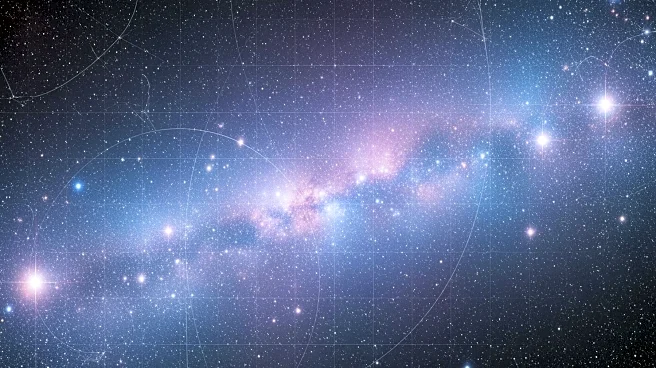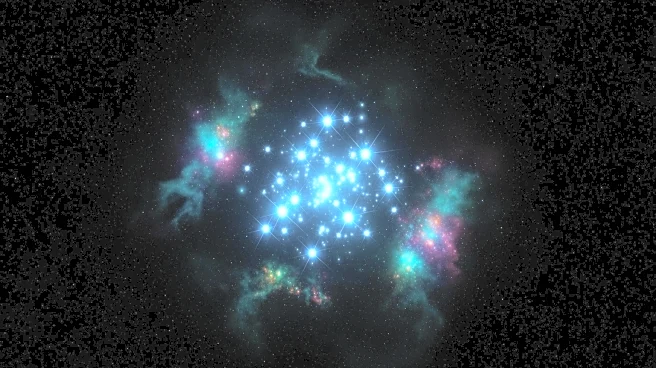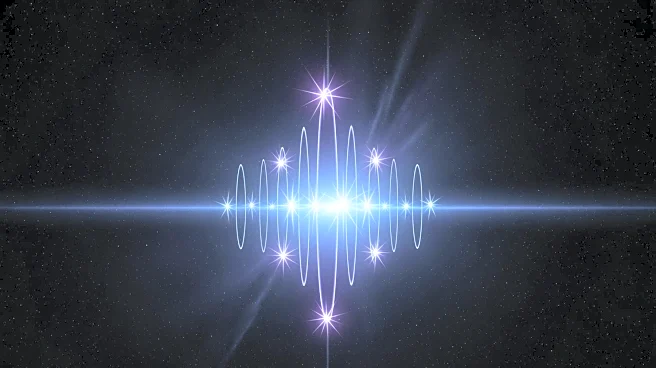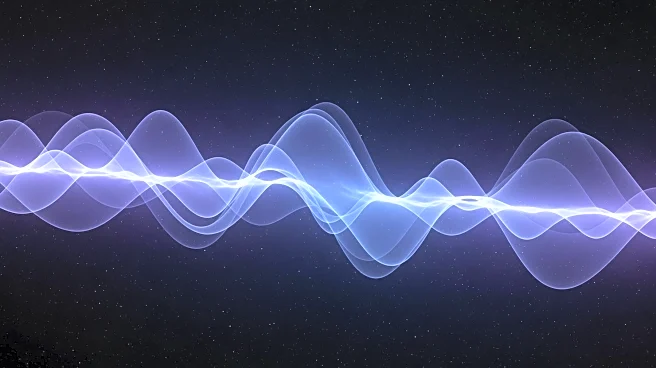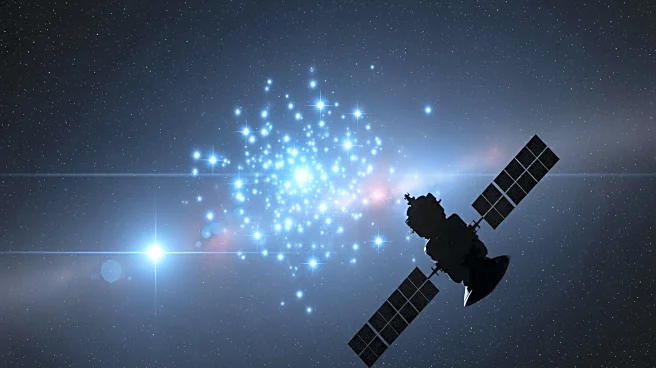What's Happening?
Researchers at RIKEN's Center for Interdisciplinary Theoretical and Mathematical Sciences have developed a groundbreaking simulation of the Milky Way, representing each of its 100 billion stars over 10,000
years of galactic time. This achievement was made possible by integrating artificial intelligence with traditional physics simulations, allowing for detailed modeling of individual stellar events such as supernova explosions. The AI-enhanced simulation significantly reduces the computational time required, from 36 years to just 115 days, and has been verified against large-scale tests on supercomputers. This approach could revolutionize modeling in various scientific fields, including climate science and weather prediction.
Why It's Important?
The development of this AI-enhanced simulation marks a significant advancement in astrophysics, providing a more accurate and efficient method to study the formation and evolution of galaxies. By capturing individual stellar events, researchers can gain deeper insights into the dynamics of the Milky Way and other galaxies. This breakthrough has the potential to transform scientific modeling across disciplines that face similar challenges in linking processes across vastly different scales. The ability to simulate complex systems with greater precision could lead to new discoveries and innovations in understanding the universe and our place within it.


